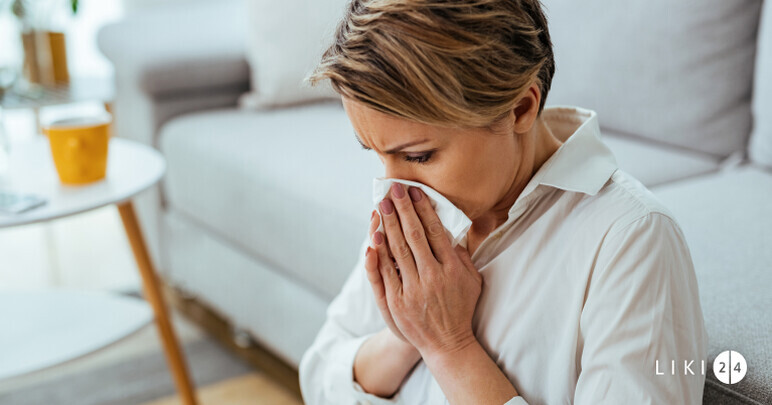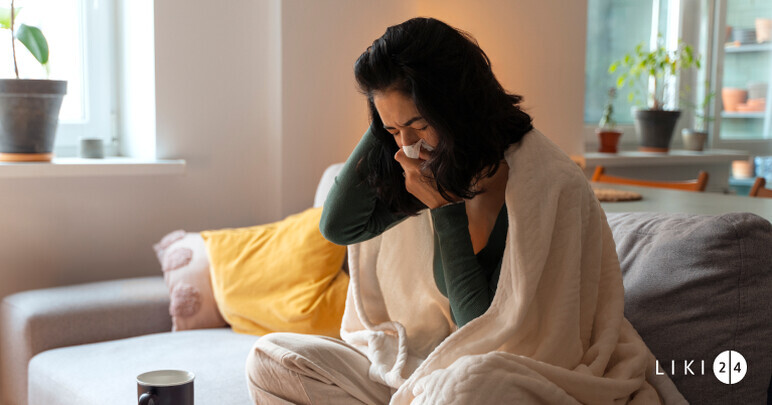People in poor health catch colds more often because their body is weaker and their immune system has less strength to fight the various factors that cause illness.
In other words, the common cold is an inflammation of viral origin, which is an acute pathology and affects the upper respiratory tract. It is highly contagious and can last from a few days to several weeks.
It is good to know that the common cold can be transmitted through contact with objects that have been contaminated and through the air. Airborne transmission is by inhaling virus particles in the air that have been spread by the infected person. The small virus particles are dispersed into the air when the sick person coughs or sneezes. Objects touched by the infected person are also a source of contamination, which is why all specialists recommend disinfecting surfaces with special substances and washing hands as often as possible.
Causes of colds
Viruses with respiratory tropism are the causative agents of colds. Over 200 viruses can cause colds. But one of the most common etiologic agents is rhinovirus. It is spread airborne through nasopharyngeal secretions emitted during coughing, sneezing, sneezing, talking, but also through direct contact with the infected person or objects contaminated with the virus. The virus enters the body through mucous membranes in the eyes, nostrils or mouth. It can survive outside the body for only 2 days, after which it dies if it cannot find a host.
Colds are much more common in pre-school children, infants, people with respiratory diseases and immunodeficiencies, and smokers. This group of people may also develop recurrent colds throughout the year.
Cold symptoms
The viruses that cause the specific cold symptoms initially harbor in the lining of the nasal passages and facial sinuses and lead to the onset of:
- Nasal congestion (stuffy nose);
- Watery nasal secretions (rhinorrhea) which may change in appearance and consistency after 2-3 days of the disease;
- cough
- Sneezing;
- Lacrimation;
- Acute angina (sore throat of inflammatory cause);
- Mild headache;
- Low grade fever;
- Otalgia (inner ear pain);
- Mild myalgia (muscle aches).
By the time we feel the first symptoms of a cold, our immune system is already working at full capacity.
The illness often resolves spontaneously after 5 to 7 days. If this time frame is exceeded, it is advisable to see a doctor to rule out other infectious diseases with a similar clinical picture.
Cold diagnosis
Diagnosis is based on clinical examination and history. When you have some of the symptoms listed above, it is a good idea to contact your family doctor for a correct and reliable diagnosis.
Cold treatment
There is no specific treatment for the common cold.
The illness has its natural course, then passes by itself in 3- 10 days. However, certain cold medicines and natural cold remedies can reduce inflammation and pain and relieve symptoms.
It is contraindicated to take antibiotics for the common cold, as their mechanism of action has no influence on viruses. Only in the case of worsening of the general condition with bacterial superinfection, which can be diagnosed by specific tests, antibiotics can be included in children for colds as well as in adults, exclusively on the advice of the specialist.
In the case of colds, a distinction is made between non-medicinal and medicinal treatment.
Treatment nemedicamentos includes:
- Hydration with plenty of fluids;
- A hot bath in the early stages of the cold;
- Steam inhalations;
- Rest at home, rest;
- Use of natural foods such as ginger, honey, garlic, vitamin C;
Drug treatment
It is established depending on the symptoms and helps us to get rid of colds more quickly, it is very varied, from sucking lozenges, tablets, throat sprays to the best cold sachets.
For nasal congestion, sprays or drops containing nasal decongestants will be given.
For allergic-type symptoms (sneezing, watery eyes), antihistamines should be given.
For dry coughs antitussives may be given, but for productive coughs expectorant preparations are given.
For headache, muscular pains and fever analgesics, antipyretics, anti-inflammatories may be given. Paracetamol can be used as an example for colds and flu. It can also be used to treat colds in children, as we can also find it in the form of cold syrup for babies.
To treat the feeling of discomfort or swelling in the throat, we can administer cold lozenges for the undert or sprays with antiseptic, emollient, anti-inflammatory effect.
Cold prevention
As the common cold is highly contagious, it is beneficial to take certain measures to prevent colds. These include:
- Wash your hands thoroughly with soap and water. It is necessary to wash your hands after using the bathroom, before eating a meal or after preparing food, after contact with an infected person;
- Clean frequently used surfaces. Viruses can be present for up to 2 days on door handles or other places that are frequently touched;
- Avoid touching your face. Flu and cold viruses spread from hands to nose, eyes and mouth;
- Boost your immune system. Try to eat healthy, get enough sleep, exercise daily. You can also use vitamins and food supplements to strengthen your immune system.
When you're already sick, it's a good idea to stay at home to stop the virus spreading and making other people sick.
In summary, the common cold is a relatively mild, upper respiratory tract infection. It differs from influenza in the type of virus that causes the infection, the onset of symptoms and their severity. There is not necessarily a need for medication to treat the common cold, but there are certain remedies that can relieve symptoms and pain. Consult your doctor to see which treatment is best for you!



 Wellness
Wellness  Fitness
Fitness  Nutrition
Nutrition  Beauty
Beauty  Wellness
Wellness  173 Views
173 Views 







 Previous Article
Previous Article 









